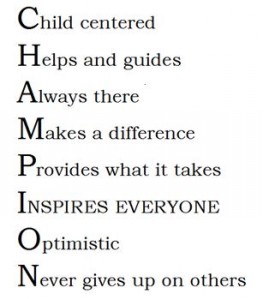Last week in my update, I shared this quote:
Sometimes our light goes out but is blown into flame by another human being. Each of us owes deepest thanks to those who have rekindled this light.
— Albert Schweitzer
Authors refer to light and darkness when creating imagery within a text. These references are so powerful that when you hear the word “light” you immediately have a picture in your mind and the connotation stirs positive thoughts and images. The power of evoking or igniting light into another person’s life is a true opportunity. Educators are given the gift to do this every single day.
Taylorsville is filled with light in many forms including actions, thoughts, words and people. Our building is not fancy and in places is worn and needs paint but the children that fill our building bring a joy. Their laughter and chatter surround this space with energy and remind me of their eagerness to learn. They come each day ready for us to guide and encourage. It is our actions as educators that can bring light to their lives or darken their world.
You, as individuals and as a staff, have ignited my light. My light had dwindled by the stress of deadlines, frustrated voices, and a plethora of tasks that have yet to be completed on time.
Here are the top 10 things about Taylorsville Elementary that has filled me with light!
10. The laughter of students filling the hall and bright colored art work that covers the walls creates a warm glow throughout the school.
9. Lessons created with care and thought and then executed with passion to connect learning for students and deepen understanding.
8. Data discussions that pin point “Swiss Cheese Holes” and end with a plan to fill them.
7. Colleagues who fill my desk with encouraging notes, smiling sticky notes and an occasional Slim Jim.
6. My fellow teachers using words like prosody, text complexity, interventions, growth mindset and YET.
5. Actions that show—PUSH!
4. An extra kindness for a student with clean clothes, money for a fieldtrip, school supplies, hugs, etc.
3. Walking through the building, seeing teachers and staff putting into action their own learning from professional development and PLC.
2. Compassion, kindness and patience with our students who have big emotions and are struggling to channel them.
1. EDUCATORS WHO TEACH FROM THEIR HEART AND ARE HERE BECAUSE THEY LOVE TAYLORSVILLE AND THOSE WHO INHABIT THIS BUILDING!
My ending thought for you! Remember I value you as my colleague and I see you do amazing things each day. I am in continuous awe of your patience and compassion—do not lose sight of these characteristics with the stress of every day “teaching.” You do make a difference and are appreciated! Be the LIGHT for all to see—Taylorsville is LIGHT and I am proud to be a part of this staff.
| L- eading our students to knowledge
I- nspite of obstacles and setbacks G- uiding them with words and actions H- oping to inspire and ignite T- hought—passion and character within! |
